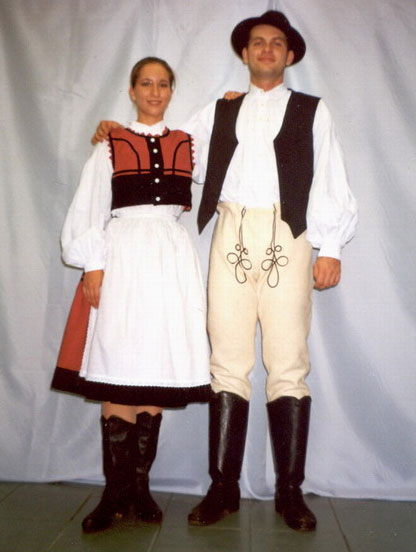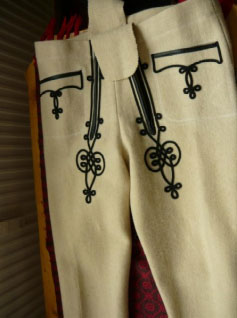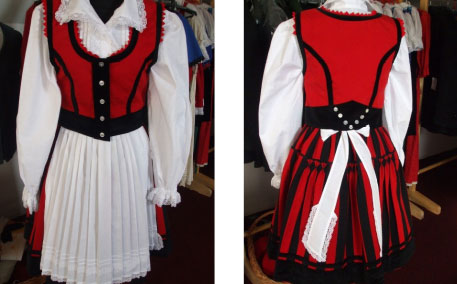 In Eastern Europe, there are many ethnic groups that are related to each other but have their own unique and distinctive features. And these characteristics are often seen by the slight difference in traditional outfits. This time, we’ll look closer at the folk clothing of Székely people – Hungarian ethnic group from Eastern Carpathians. Their national costumes look elegant and crisp, a cute combination of white, red, and black.
In Eastern Europe, there are many ethnic groups that are related to each other but have their own unique and distinctive features. And these characteristics are often seen by the slight difference in traditional outfits. This time, we’ll look closer at the folk clothing of Székely people – Hungarian ethnic group from Eastern Carpathians. Their national costumes look elegant and crisp, a cute combination of white, red, and black.
The Székelys are peoples closely related to Magyars or descendants of Magyarised Turkic peoples, settled in Hungary to guard the frontiers of the Ottoman Empire. They dwell in Eastern Carpathians, on the territory of modern Hungary, Romania, and Serbia. But the Székelys have preserved their history, folklore, and old traditions, including the clothing traditions.
The national attire of these people differs from the Hungarian or Romanian or Serbian folk dress. There are a lot of common features, as the costume is very much Slavic by appearance, but still, a certain unique vibe is distinctive.

Among the specific features of Székely traditional dress, is its straight-lined cut. Such a design allows to use the fabric optimally, with little waste of material. Today, waste-free production is a new trend because people have realized how much waste we produce, but the Székelys have been making their clothes by this rule for centuries. Some authentic garments made in this straight-lined design survived almost until this day. Among them are szűr (ornate mid-calf coat made from felted wool), suba (warm sheepskin cape of Hungarian shepherds), guba (wool cloak made in unique fashion to resemble fur), gatyas (male linen trousers), etc.
Székely folk costumes, basically, are similar to other Hungarian garments, but there are some specific details that are different.
Székely men’s costume
Székely male attire consists of a shirt, linen gatya as underwear, broadcloth hose called “harisnya”, a leather vest, outerwear, a felt or fur hat, and boots.
The shirt originally was collarless and cuffless, though these days, it is a linen shirt with a shirt collar or stand-up collar and cuffs.
The trousers harisnya look festive and elegant. They are white, made from fine wool, and fastened at the sides. These pants are tight-fitting. Also, they have pretty decorations determined by social status.

In summer, men wear a leather vest, adorned with braiding, over a shirt.
In winter, they use different homespun coats: zeke, szokmány, cedele, or bámbán. Another garment can be a long leather coat.
The headdress is a wide-brimmed felt hat in summer and a fur hat in winter. Originally, Székely males wore long hair, but since the early 20th century, they prefer short haircuts.
The traditional footwear was laced sandals or festive leather boots.
Székely women’s costume
The female outfit consists of a linen blouse, a tight bodice, a linen or cambric petticoat, a skirt, an apron, outerwear, a headdress, and shoes.
The blouse is made from linen. It has a frilled collar and narrow cuffs.
The bodice is tight-fitting, ornate, and really cute. It can be embellished with beading, velvet inserts or borders, braiding, etc.
The skirts were originally made from homespun cloth and adorned with red, black, brown, and blue stripes. Later, the local women started to wear red cotton skirts with a black border.

The apron can be cotton or woolen. And it is an obligatory item.
In winter, women wore a sheepskin vest called “bundamellény” or a woolen coat called “szokmány” or a short coat called “kurti”. The outer garments were handmade.
Unmarried girls wore their hair in two braids; married women wore it up and hidden under a bonnet called “csepesz” or a kerchief.
The footwear was soft-topped boots or, later, shoes.


